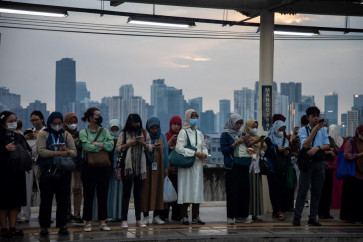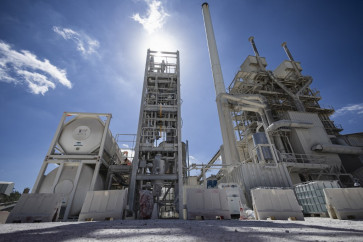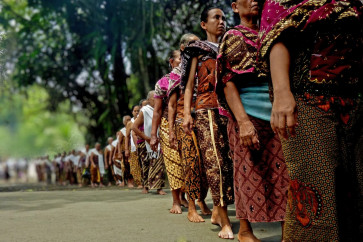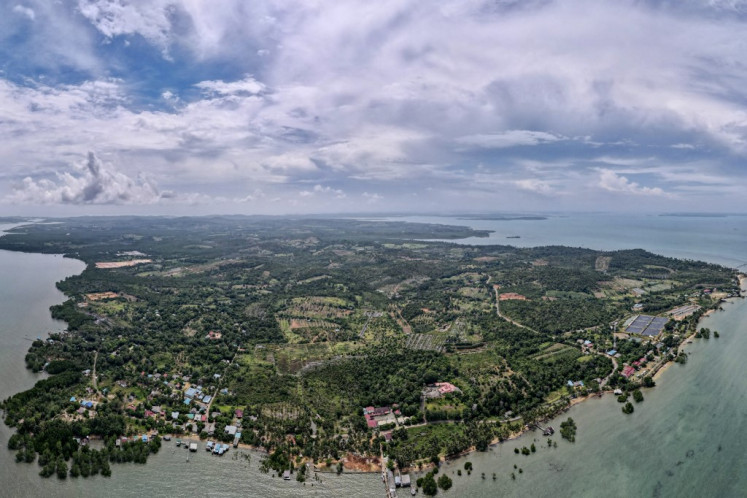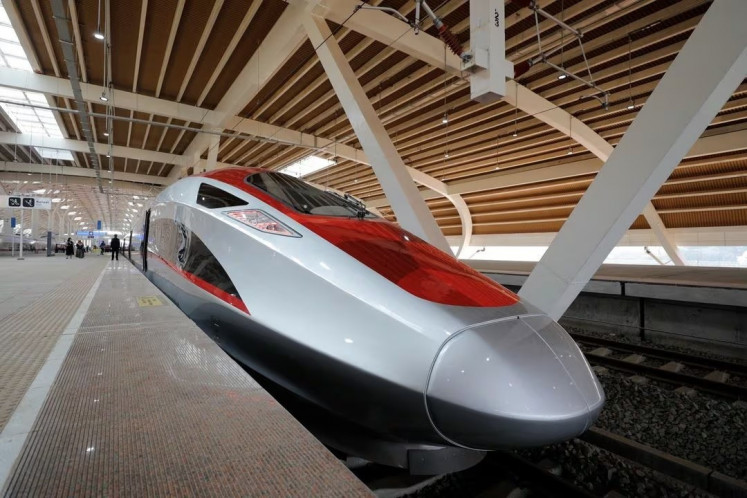Popular Reads
Top Results
Can't find what you're looking for?
View all search resultsPopular Reads
Top Results
Can't find what you're looking for?
View all search resultsMuslims celebrate Lebaran Ketupat a week after Idul Fitri
After Idul Fitri: Residents jostle to grab ketupat (rice cones) during Lebaran Topat (The seventh day after Idul Fitri) at Duduk Beach, Senggigi area, West Nusa Tenggara on Monday
Change text size
Gift Premium Articles
to Anyone
A
span class="caption">After Idul Fitri: Residents jostle to grab ketupat (rice cones) during Lebaran Topat (The seventh day after Idul Fitri) at Duduk Beach, Senggigi area, West Nusa Tenggara on Monday. Many Indonesian Muslims celebrated Lebaran Topat or Riyoyo Kupat (in Javanese) by eating rice cones and various condiments. JP/Panca Nugraha
In an expression of gratitude for completing the Ramadhan fasting month, thousands of Muslims across the country gathered on Monday to celebrate Lebaran Ketupat, which is held to commemorate the conclusion of an extra six days of fasting following Idul Fitri.
The word ketupat refers to steamed rice cooked inside a diamond-shaped container made of plaited coconut or palm leaves. It is served as the main dish during the celebration.
In West Lombok, West Nusa Tenggara (NTB), thousands of Muslims celebrated Lebaran Ketupat ' or Lebaran Topat as it is locally called ' by visiting the graves of Muslim preachers before partaking in recreational activities together with other families.
'Lebaran Topat is celebrated in some regions in Indonesia, but in Lombok, especially West Lombok, it is special because it is well-preserved. This is true even though the regency administration does not coordinate it,' West Lombok Deputy Regent Fauzan Khalid said on Monday at the official opening of the ceremony at Duduk beach, just a kilometer to the south of Senggigi, the popular tourist center.
This year's ceremony centered on three locations; Duduk beach in Batulayar district, Cemara beach in Lembar district and Kuranji beach in Labuapi district.
Entertainment ranging from music performances to ketupat cooking competitions to shared meals were on offer during the celebration, where ketupat was served as the main dish. Side dishes at the events varied, ranging from pelecing kangkung (stir-fried water spinach) to the local dish of Taliwang chicken.
'Apart from its value as an expression of gratitude, Lebaran Topat is also an occasion for building friendship,' Fauzan said.
Local religious figure Tuan Guru Syamsi said that the essence of the Lebaran Topat celebration was to show gratitude to God after successfully completing the monthlong fast during Ramadhan and the six-day fast following Idul Fitri.
Separately, local cultural observer Jalaluddin Arzaki said that the celebration was part of 'adat dwirgami', a local tradition that had been passed on by ancestors living in a time that predated the arrival of Islam.
'In the past, Islamic preaching was resisted if it did not accommodate local culture,' Jalaluddin said.
Meanwhile, in Semarang, Central Java, Lebaran Ketupat, or as it is called locally, Bada Kupat, was celebrated by cooking and serving ketupat and lepet (steamed sticky rice cooked in plaited palm leaves).
Ahmadi, a ketupat container seller at the Bulu market in Semarang, said that a collection of 10 ketupat containers were selling for between Rp 7,500 and Rp 10,000.
In Kudus regency, Central Java, Bada Kupat had become a tourist attraction. There, celebrations were held at number of places, such as in Colo, Bulusan and Lomban in Mejobo district.
In Colo, the celebration featured a parade of gunungan (cone-shape offering) made of ketupat, lepet and other food items on the slope of Mount Muria near the grave of noted Muslim preacher Sunan Muria.
'This is a tradition that shows respect to Sunan Muria,' said Kudus Regency Tourism and Culture Agency head Sancaka Dwi Supani, adding that the celebration was entitled 'The Parade of A Thousand Kupat'.
On the slope of Mount Merapi in Boyolali regency, also in Central Java, the celebration featured a parade of livestock wearing ketupat as necklaces.


